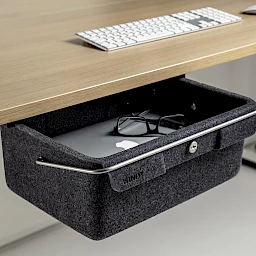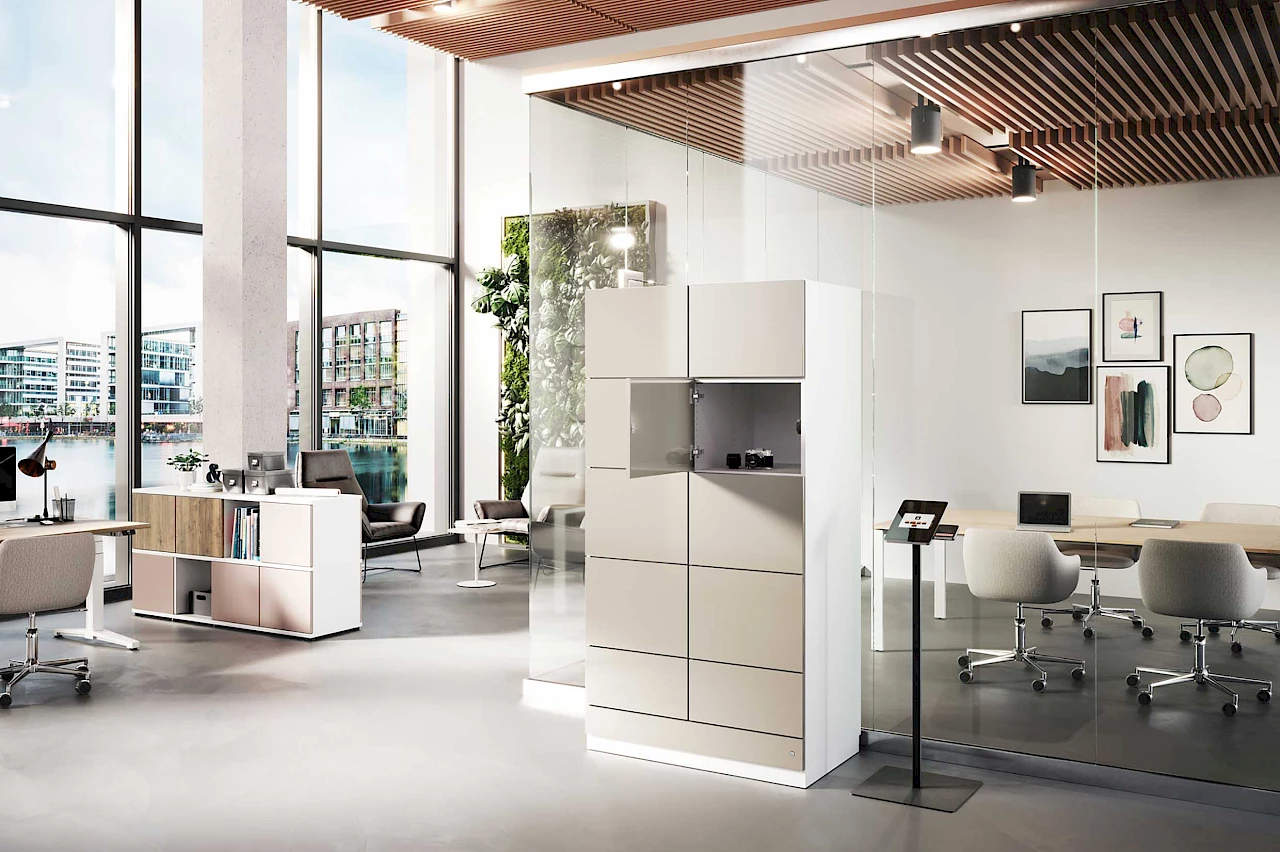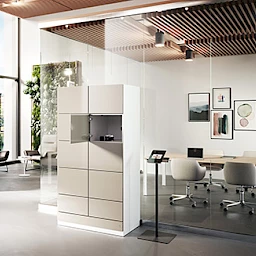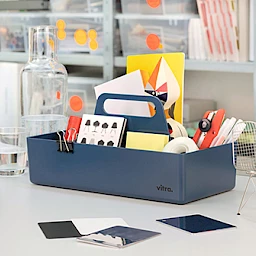According to a survey conducted by the planning and consulting company Drees & Sommer, 66% of all companies in Germany are currently promoting desksharing. In most cases, the implementation is probably still limited to specific areas of the company. However, this could soon change. That’s because the same survey shows that an expansion of the desksharing principle is being planned in many companies. This raises the question of what the consequences will be—for the workstations and the corporate culture.
In general, the term “desksharing” refers to the use of a desk workstation by several people. Today the concept of desksharing is almost always associated with the idea of a free choice of seat, which is known as non-territorial working. The term desksharing is used in this sense in the following comments as well.
Organizational aspects
Desksharing offers clear advantages. The associated reduction of the number of desks decreases the number of unused workstations and creates space for communication and collaboration. On the other hand, foregoing the possibility of having one’s own territory is not a simple matter, in either a psychological or an organizational sense. The people who are affected must plan the times when they need a desk—that is, not only when they want to be at the company but also what they will then do on site. The fewer desktop workstations are available, the more important this planning becomes.
As a result, it is advisable to begin the changeover with a relatively low percentage of desksharing. In addition, enabling employees to reserve a desk should also mean that there are clear rules regarding the reservation process and the employee’s minimum presence at the desk. This approach can reduce problems with employees’ acceptance of the change, and help to gather experience.
Functional measures
In addition, functional measures are required in order to make sure that desksharing does not lead to a reduction in work quality and performance.
1. An ergonomic Workstation
A height-adjustable desk and swivel chairs in which the height of the seat, the armrests, the backrest and the lumbar support can be adjusted to the individual body measurements of the changing users in a few simple steps are essential. By contrast, the chair’s adaptation to the weight of the user should ideally be automatic.
2. Technical equipment
Technical equipment has an influence on the ergonomic quality and also the efficiency of the work. According to the German Workplace Ordinance (ArbStättV), the monitor and the input devices at a monitor-based workstation must be separate units. As a result, working permanently only on a laptop is not an option for desksharing employees.
3. Cleanliness and hygiene
These considerations also raise the question of how to allocate the input devices that are available. The keyboard and the mouse that are used by one’s colleagues don’t always look so appealing that you’d like to use them directly yourself. Here it’s best to define the rules regarding input devices from the very start, and ideally as a team. For example, the devices could be cleaned every day. Alternatively, each employee could be provided with his or her own keyboard and mouse, which would be stored in a suitable place after use.
4. Personal storage space
Today there’s a whole spectrum of options for storing personal items at work. They range from the traditional caddy storage unit to bags and baskets in which people can transport a small number of personal items and store them in a locker after use.
Please also read

Atmosphere and well-being
In order to make desksharing a popular option, the loss of the individual’s personal territory must also be compensated for. In short, the entire office must become a place where people feel at home. But in order for that to happen, the office has to offer much more than it has done so far.
1. Setting up a variety of different areas
In many companies there is still a lack of spaces for interaction, casual conversations and the associated opportunities to learn from and with one another. Instead of repurposing areas, managers should first check to see whether these spaces can be used more effectively. The recommendation to set up a variety of different areas also applies to the desktop workstations themselves. Rather than setting up “think tanks”, why not reserve entire rooms for concentrated work and open up other rooms for mixed use?
2. Investing in atmosphere
To enable “my desk” to become “my office”, it’s also necessary to establish a welcoming culture that focuses on hospitality. Companies can learn a lot about hospitality by looking at the restaurant and hotel sector. That applies especially to the significance of small details, because whether an environment is perceived as pleasant and respectful depends to a large extent on materials, colours, plants and decorations. Here as well, it makes sense to include the employees in the design process.
3. Provide space for personal items
In order to allow a sense of personal space in addition to the shared territory, items such as family photos should be included in the desksharing concept. If the employees’ baskets contain not only their personal work tools and pen boxes (see above) but also a framed photo or favourite figurine, it will help to make these employees’ temporary workstations feel like places where they belong.
The issue of space
There still remains the question of what happens if more people turn up to work in the office than was originally planned. The only things that can help are to make a generous estimate of how many desks will be needed over the long term and to have flexibly usable rooms available to cover all eventualities. There are certainly enough options.




 Barbara Schwaibold
Barbara Schwaibold 


